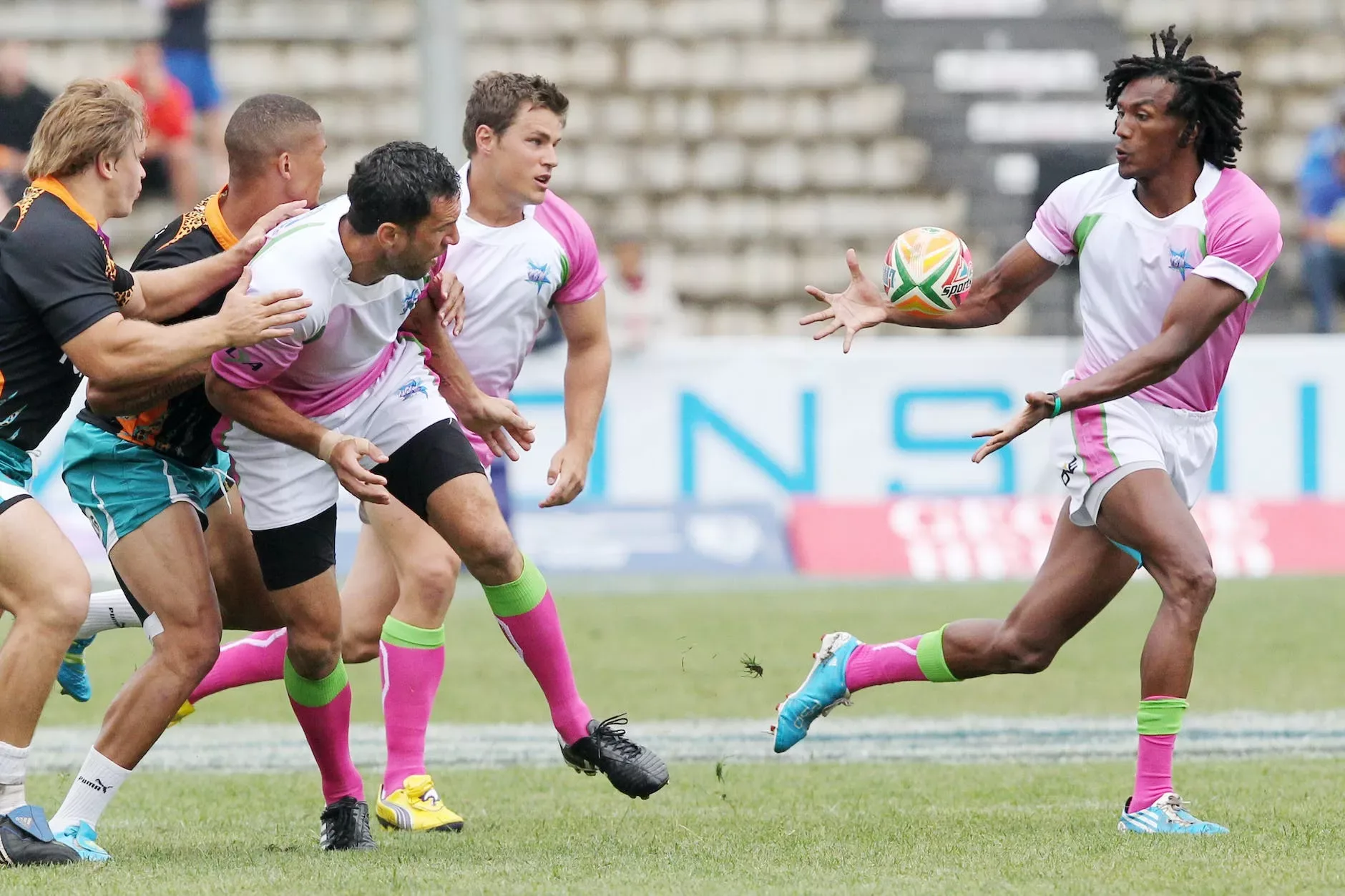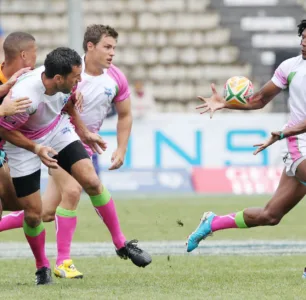Master the art of catching a rugby ball and boost your confidence on the field with these seven essential techniques.
Are you a rugby player who wants to enhance your skills and become more confident in catching the ball? Whether you’re a seasoned player or new to the game, mastering the art of catching a rugby ball is crucial for success on the field. A strong catch can set up scoring opportunities, maintain possession, and turn the tide of the game in your favor. In this comprehensive guide, we’ll explore seven essential techniques that will help you catch a rugby ball with confidence and excel in any match situation.
1. Focus on Hand-Eye Coordination
One of the fundamental aspects of catching a rugby ball is developing excellent hand-eye coordination. This skill allows you to track the ball’s trajectory accurately and position your hands to make a successful catch. To enhance your hand-eye coordination, engage in regular exercises that challenge your visual tracking abilities. For instance, juggling can improve your reaction time and hand dexterity, making it an excellent activity for rugby players aiming to catch the ball more confidently.
2. Get into the Right Position
Positioning yourself correctly is key to successfully catching a rugby ball. Start by getting your body in a stable and balanced stance, with your feet shoulder-width apart. Bend your knees slightly to maintain a low center of gravity, enabling quick movements and better stability. Keep your eyes focused on the ball, with your hands out in front of you, ready to receive the catch. Remember, a well-balanced position provides a solid foundation for a successful catch.
3. Assess the Flight Path
To catch a rugby ball effectively, it’s essential to assess its flight path accurately. As the ball is kicked or passed towards you, keep your eyes fixed on it and track its movement. Evaluate its speed, trajectory, and spin, as these factors will affect how you position your hands for the catch. By closely observing the flight path, you’ll be better equipped to anticipate the ball’s arrival and make a confident catch.
4. Create a Target with Your Hands
When catching a rugby ball, it’s crucial to create a target with your hands. Form a diamond shape by touching the tips of your thumbs and index fingers together, creating a stable and secure platform. This target will provide a clear focus for the ball to land and be controlled effectively. Ensure that your fingers are spread wide apart, allowing for better grip and reducing the chances of the ball slipping through your hands.
5. Time Your Catch Perfectly
Timing is everything when it comes to catching a rugby ball. Anticipate the ball’s arrival and extend your arms at the right moment to meet it. Attempt to catch the ball at its highest point, just before it starts to descend. By timing your catch accurately, you gain an advantage over opponents and increase the likelihood of a secure reception. Practice your timing by participating in drills that simulate different catching scenarios, improving your ability to react swiftly and snatch the ball with confidence.
6. Secure the Ball with a Strong Grip
A strong grip is essential for maintaining control over the rugby ball once you’ve caught it. As the ball comes into contact with your hands, grip it firmly using your fingers and palms. Avoid catching the ball with just your fingertips, as this can lead to instability and potential fumbles. Engage your entire hand, ensuring that the ball is securely held against your body. A strong grip will enable you to absorb contact from opponents and maintain possession even in challenging situations.
7. Train Under Varied Conditions
To truly excel in catching a rugby ball with confidence, it’s crucial to train under different conditions. Practice catching in various weather conditions, such as rain, wind, or bright sunlight, to develop adaptability. Additionally, vary the angle and height from which the ball is thrown or kicked during training sessions. By exposing yourself to different scenarios, you’ll become more comfortable and confident in catching the ball under any circumstances, making you a valuable asset to your team.
Conclusion
Catching a rugby ball with confidence requires a combination of technical skill, mental focus, and physical coordination. By mastering these seven essential techniques, you’ll be well on your way to becoming a reliable and confident receiver on the rugby field. Remember to focus on hand-eye coordination, get into the right position, assess the flight path, create a target with your hands, time your catch perfectly, secure the ball with a strong grip, and train under varied conditions. With practice and dedication, you’ll elevate your catching abilities and contribute significantly to your team’s success. So, get out there, put these techniques to the test, and watch your confidence soar as you become a formidable force in catching a rugby ball!
Rugby Catching Drills to Improve Your Skills
1. Basic Passing and Catching Drill
This drill focuses on the fundamentals of catching and passing, building a strong foundation for more advanced skills. It can be done individually or with a partner.
Instructions:
- Stand facing your partner (or a wall if practicing alone) at a distance of about 5 meters.
- Pass the ball to your partner with a flat and accurate throw.
- As soon as you release the ball, quickly get your hands up and ready to catch.
- Receive the ball with the correct hand positioning, absorb the impact, and secure the ball against your body.
- Repeat the drill, alternating between passing and catching.
This drill helps improve hand-eye coordination, accuracy in passing, and the ability to react quickly to catch the ball.
2. Running Catch Drill
The running catch drill simulates game situations where you have to catch the ball while on the move. It helps improve your ability to judge the flight path and catch the ball while in motion.
Instructions:
- Set up a marked pathway or use cones to create an obstacle course.
- Start running along the pathway while maintaining a steady pace.
- Have a teammate or coach throw the ball towards you at varying heights and angles.
- Adjust your speed and position to catch the ball while continuing to move forward.
- Focus on maintaining a good body position, tracking the ball, and securing it with a strong grip.
- Repeat the drill multiple times, gradually increasing the difficulty by adding more turns or obstacles.
This drill enhances your agility, hand-eye coordination, and the ability to catch the ball while under pressure and on the run.
3. Reaction Time Drill
The reaction time drill improves your reflexes and helps you anticipate and react quickly to the ball’s movement.
Instructions:
- Stand facing a partner or a coach.
- Position yourself a few meters apart.
- Your partner or coach randomly throws the ball towards you, using different throws such as high lobs, low skimmers, or quick bullet passes.
- React swiftly to catch the ball by adjusting your hand positioning accordingly.
- Focus on your timing, hand-eye coordination, and quickly adapting to different throws.
- Repeat the drill, gradually increasing the speed and difficulty of the throws.
This drill hones your reaction time, hand-eye coordination, and adaptability in catching the ball in unpredictable situations.
4. Pressure Catch Drill
The pressure catch drill introduces an element of competition and pressure, simulating game-like scenarios where defenders are challenging your ability to catch the ball.
Instructions:
- Divide into two teams: attackers and defenders.
- Set up a playing area with a designated target zone.
- The attackers spread out within the playing area, while the defenders position themselves strategically to intercept passes or disrupt catches.
- The attackers must pass and catch the ball while under pressure from the defenders.
- Focus on maintaining composure, accurate passing, and secure catches even with defenders attempting to intercept or knock the ball away.
- Switch roles between attackers and defenders to provide equal opportunities for all players.
This drill helps develop your ability to catch the ball confidently even when faced with opposition, improving your decision-making, awareness, and accuracy under pressure.
5. One-Handed Catch Drill
The one-handed catch drill challenges your coordination and strengthens your ability to make acrobatic catches in difficult situations.
Instructions:
- Stand facing a partner or a wall.
- Start with the ball in both hands.
- Toss the ball slightly in the air.
- Choose one hand to catch the ball, practicing with both your left and right hand.
- Focus on using proper hand positioning, securing the ball with a strong grip, and maintaining control.
- Repeat the drill, gradually increasing the height and speed of the toss.
This drill improves your hand-eye coordination, hand strength, and the ability to make spectacular catches when only one hand is available.
Conclusion
Incorporating these rugby catching drills into your training routine will enhance your skills and make you a more confident player on the field. Remember to practice regularly, focus on your technique, and gradually increase the difficulty as you improve. By mastering the art of catching, you’ll become an invaluable asset to your team, consistently securing possession and contributing to your team’s success. So, grab a ball, find a training partner, and start practicing these drills to take your rugby catching skills to the next level!

